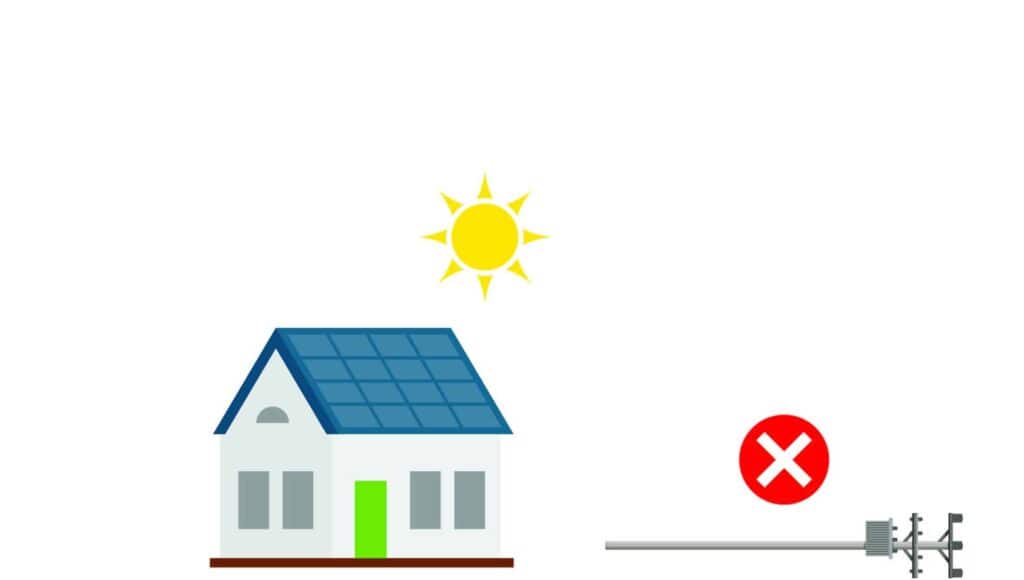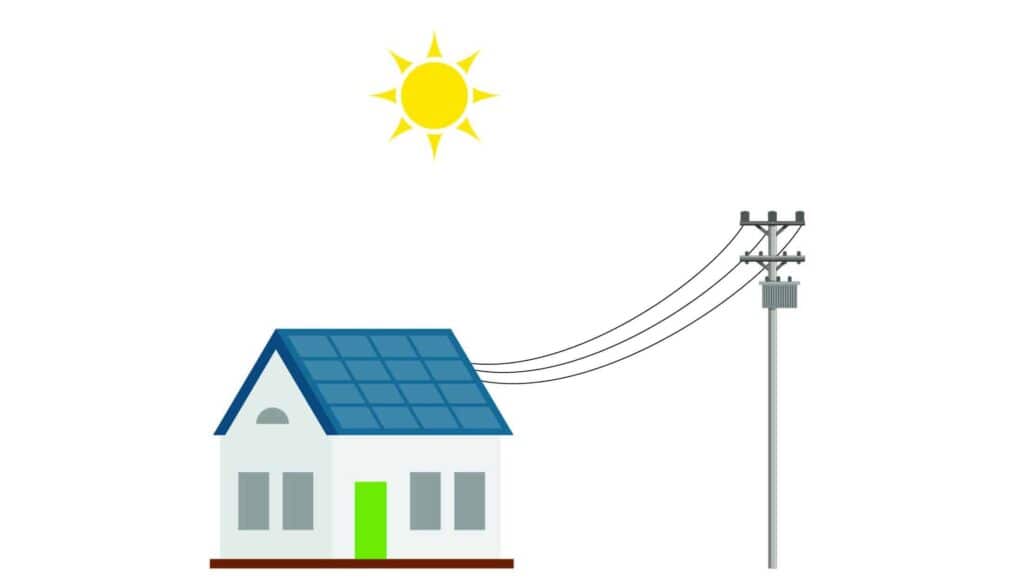Table of Contents
Grid-tied or Off-grid Solar? Choosing the Right System.
What is a grid-tied or off-grid solar system? This post explains what those terms mean, why you should care (hint: one is more expensive than the other) and which would suit you better.
Let’s start with an off-grid solar system.
What is an off-grid solar system?
In an off-grid solar system, you are not connected to a power company (ZESA). That means you are not getting any electricity from the utility.
All your electricity comes from your solar system. Off-grid solar systems are for:
- Remote locations where utility electricity is unavailable. This could be in the rural areas or a safari lodge, for example.
- New residences or buildings where the owner has opted to go solar rather than connect to the utility.

How off-grid works
Energy from the solar panels is sent to a battery bank for storage and use. Batteries are a must if you want to have electricity at night when the solar panels have stopped producing energy.
Remember solar panels produce energy only during the day. The addition of batteries allows you to use that energy at night.
Can you use solar to completely power your home?
Yes, you can if you size your system correctly. In some situations, this might be more expensive than a grid connection. In other situations, it might work out cheaper to go entirely solar. Every scenario is different.
What equipment do you need?
The primary components of an off-grid system are:
- Solar panels to produce energy.
- A charge controller to regulate the flow of energy to your batteries.
- Batteries to store energy for nighttime use.
- An inverter to convert DC to AC.
- A backup generator. This is an optional addition that can be used on overcast days where your solar panels are not producing enough energy.
Pros of off-grid solar
- You don’t pay for electricity since you produce your own.
- It’s often cheaper than getting connected to the grid.
Cons
- Batteries are the most expensive part of a solar system. This makes the overall startup cost quite high.
- You are relying completely (if you don’t have a generator) on solar. It might not be enough to meet all your needs.
Off-grid solar gives you the independence of producing your electricity and not having to pay for it. But what if you already have a utility connection and you’re getting electricity? How do you go solar then? Here, what you need is a grid-tied solar system.
What is a grid-tied solar system?
In a grid-tied solar system, you already have an existing electricity connection from the power company (ZESA). They provide you with electricity, which you pay for at the end of every month.
But you also supplement your grid-supplied electricity with energy from a solar system.

How grid-tie works
Energy from your solar system is used:
- During the day, and then you switch to utility electricity at night,
- To power the lower demand loads like television while the high demand loads like washing machines use utility electricity,
- As a backup for when there is no utility electricity.
A grid-tie system can work with or without batteries.
What equipment do you need?
For a grid-tie system you need:
- Solar panels.
- An inverter.
- Batteries (Optional).
- Charge controller (Only if you decide to use batteries).
Pros of a grid-tie solar system
- It’s cheaper than off-grid, especially if you skip buying batteries altogether.
- You have both grid-supplied energy and solar, so you never have to worry about going without electricity.
- It helps you reduce your electricity bill.
Cons
- You still have to pay your electricity bill.
Grid-tie, either with or without batteries, is your only option if your home or business already has a utility connection. Grid-tie will still allow you to reduce your energy costs and escape load shedding or blackouts.
Solar system FAQs
These are some answers to common questions on both off-grid and grid tie solar.
What’s the difference between off-grid and grid tied?
Grid-tied means you are connected to and are supplied electricity by your power utility company. Off-grid means you are not connected to and supplied electricity by the power utility. You supply your electricity through solar, wind or alternative energy sources.
Is off-grid better than grid-tied?
Neither is “better” than the other. Both systems have their pros and cons and specific situations in which they are better.
Off-grid gives you independence but can be unreliable and expensive. Grid-tie is reliable, but you still have an electricity bill to pay.
Conclusion
Now you know what a grid-tied and off-grid solar system is. From here, you should be able to decide which system design is right for you.
Think you’re up to speed on solar? Take the 5 minute Solar 101 Quiz and test your knowledge.